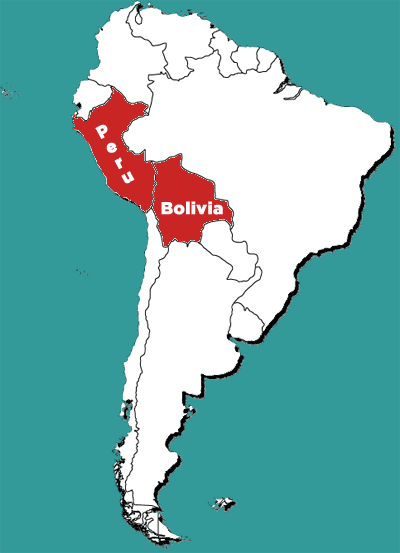
Circle the area on this map

A. While the official capital of Bolivia is Sucre and it is the seat of Justice, La Paz has more government departments, hence the "de facto" qualifier. La Paz, El Alto and Viacha comprise a metropolitan area with 2.3 million people.
B. The Andes range extends 4,300 miles north to south though South America, making it the longest continental mountain range in the world. Lake Titicaca is on the Andes' Altiplano plateau, the world's second-highest after Asia's Tibetan plateau.
C. Cyanide is used to separate the silver from ore. The Canadian company that planned to mine silver in the area said the process would have no impact on Lake Titicaca. But, Peru revoked Bear Creek Mining Corp.'s permit for the mine after the protests.
B. Decimated by smallpox and divided by a civil war, the Incas were conquered in 1532 by Francisco Pizarro leading a force of 168 men, 27 horses and one cannon. Other Spanish conquistadors defeated the Aztec Empire in Mexico and the Mayan people in Central America.